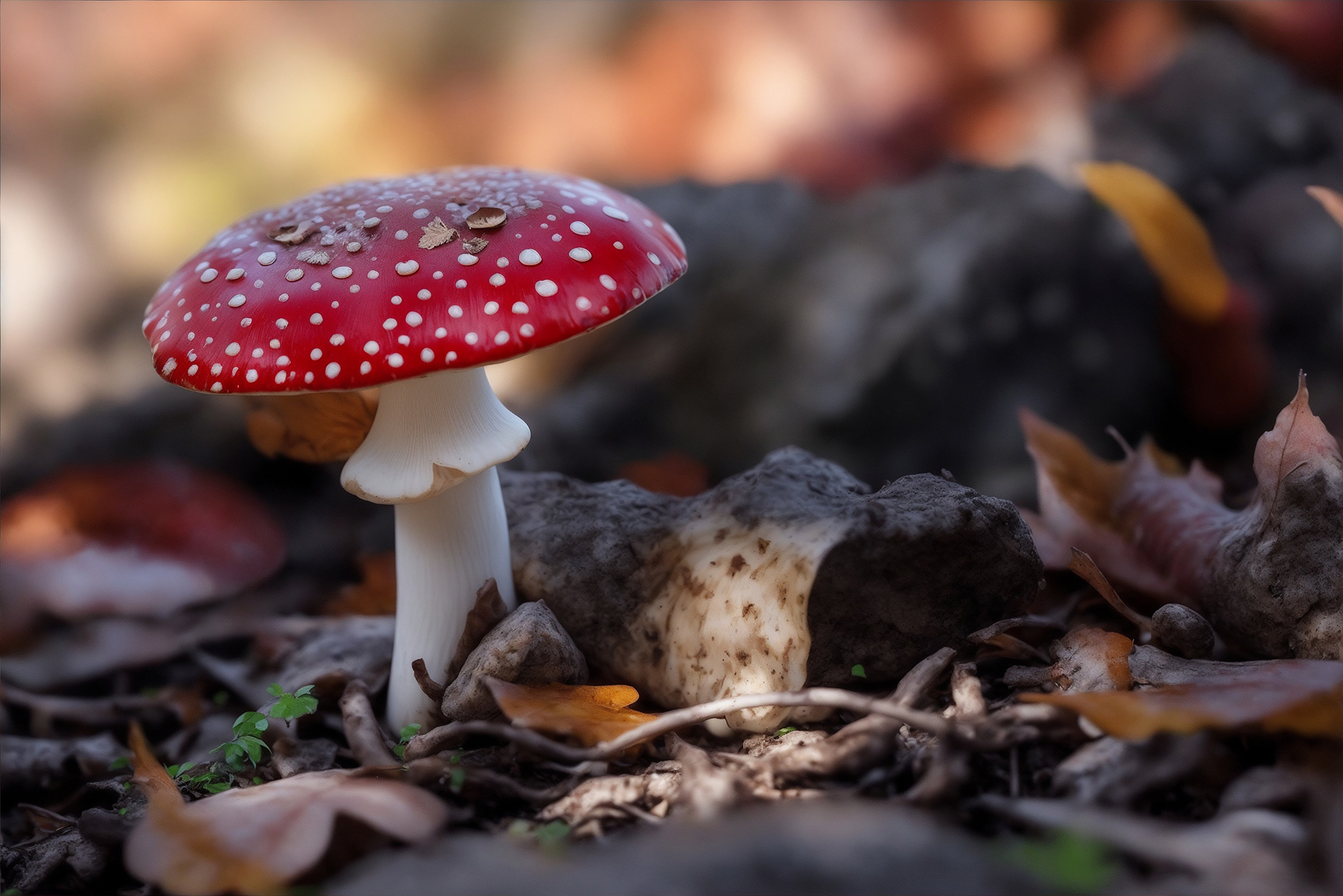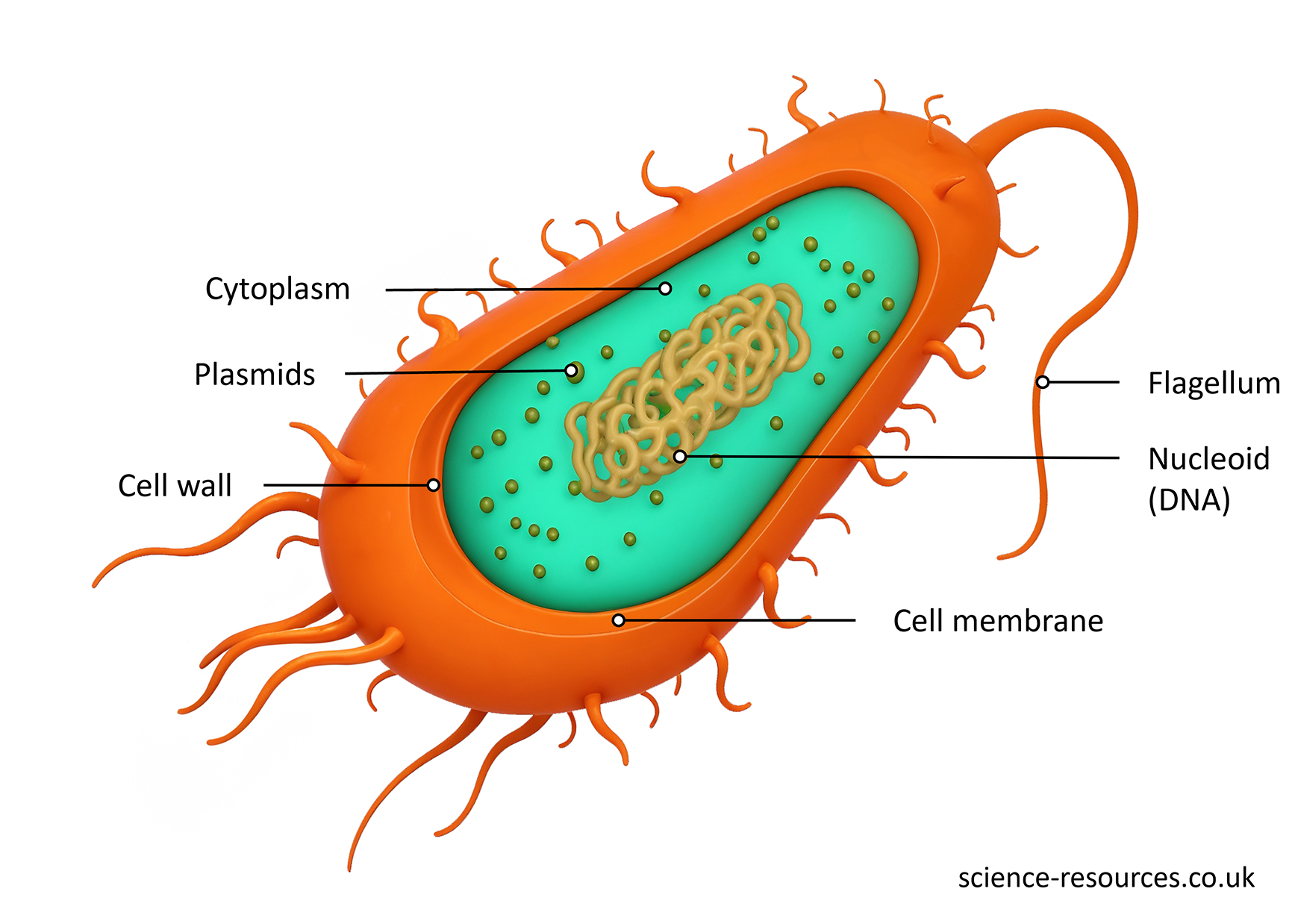Unicellular organisms
Unicellular organisms are living things that have only one cell. They can be fungi, protozoa, or bacteria. Each type of unicellular organism has adaptations for its environment. Fungi Yeast are fungi that can turn sugar into alcohol or carbon dioxide. They are useful for making wine, beer, and bread. Some fungi can also grow into mushrooms and toadstools. Protozoa Protozoa are water-dwelling or moist unicellular organisms, such as amoebas. Bacteria Bacteria are one-celled organisms that can do all seven life processes: movement, respiration, sensitivity, growth, reproduction, excretion, and nutrition.

A toadstool is a fungi
Bacterium Components of bacteria
Bacterium have some features in common with plant and animal cells, such as a cell membrane and cytoplasm. They also have a cell wall, like plant cells. But unlike most plant and animal cells, they lack a nucleus.

A bacteria cell
Cell wall - Tough outer layer that gives strength and support to the cell.
Cell membrane - Permeable inner layer that regulates what enters and exits the cell.
Cytoplasm - Liquid that fills most of the cell and where chemical reactions occur. It is mainly water.
Plasmids – Small circular pieces of DNA that can move between bacteria.
Nucleoid DNA - Bacteria do not have a nucleus or chromosomes. Their genetic material (DNA) is a large circular molecule.
Flagellum (Not always present) - Tail-like structure that allows bacteria to move through liquids.
Summary: